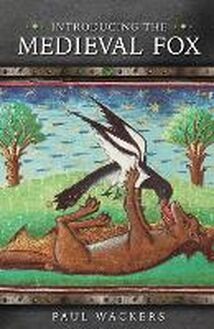-
 Univers
Univers
-
 Ebooks
Ebooks
-
 Livres audio
Livres audio
-
 Presse
Presse
-
 Podcasts
Podcasts
-
 BD
BD
-
 Documents
Documents
-
- Cours
- Révisions
- Ressources pédagogiques
- Sciences de l’éducation
- Manuels scolaires
- Langues
- Travaux de classe
- Annales de BEP
- Etudes supérieures
- Maternelle et primaire
- Fiches de lecture
- Orientation scolaire
- Méthodologie
- Corrigés de devoir
- Annales d’examens et concours
- Annales du bac
- Annales du brevet
- Rapports de stage
La lecture à portée de main
Découvre YouScribe en t'inscrivant gratuitement
Je m'inscrisDécouvre YouScribe en t'inscrivant gratuitement
Je m'inscrisEn savoir plus
En savoir plus

Description
What comes to mind when we think of swans? Likely their beauty in domestic settings, their preserved status, their association with royalty, and possibly even the phrase ‘swan song’. This book explores the emergence of each of these ideas, starting with an examination of the medieval swan in natural history, exploring classical writings and their medieval interpretations and demonstrating how the idea of a swan’s song developed. The book then proceeds to consider literary motifs of swan-to-human transformation, particularly the legend of the Knight of the Swan. Although this legend is known today largely through Wagner’s opera, it was a best-seller in the Middle Ages, and courts throughout Europe strove to be associated as descendants of this Swan Knight. Consequently, the swan was projected as an icon of courtly and eventual royal status. The book’s third chapter looks at the swan as icon of the Lancasters, particularly important during the reign of Richard II and the War of the Roses, and the final chapter examines the swan as an important item of feasting, focusing on cookery and husbandry to argue that over time the right to keep swans became an increasingly restricted right controlled by the English crown. Each of the swan’s medieval associations are explored as they developed over time to the modern day.
Introduction
1. The Medieval Swan: History and Culture
2. The Swan in Literature
3. The Swan at Court
4. The Swan in Art
5. The Legacy of the Medieval Swan
Bibliography
Sujets
Informations
| Publié par | University of Wales Press |
| Date de parution | 15 juillet 2022 |
| Nombre de lectures | 0 |
| EAN13 | 9781786838407 |
| Langue | English |
| Poids de l'ouvrage | 16 Mo |
Informations légales : prix de location à la page 0,0750€. Cette information est donnée uniquement à titre indicatif conformément à la législation en vigueur.
Extrait
-
 Univers
Univers
-
 Ebooks
Ebooks
-
 Livres audio
Livres audio
-
 Presse
Presse
-
 Podcasts
Podcasts
-
 BD
BD
-
 Documents
Documents
-
Jeunesse
-
Littérature
-
Ressources professionnelles
-
Santé et bien-être
-
Savoirs
-
Education
-
Loisirs et hobbies
-
Art, musique et cinéma
-
Actualité et débat de société
-
Jeunesse
-
Littérature
-
Ressources professionnelles
-
Santé et bien-être
-
Savoirs
-
Education
-
Loisirs et hobbies
-
Art, musique et cinéma
-
Actualité et débat de société
-
Actualités
-
Lifestyle
-
Presse jeunesse
-
Presse professionnelle
-
Pratique
-
Presse sportive
-
Presse internationale
-
Culture & Médias
-
Action et Aventures
-
Science-fiction et Fantasy
-
Société
-
Jeunesse
-
Littérature
-
Ressources professionnelles
-
Santé et bien-être
-
Savoirs
-
Education
-
Loisirs et hobbies
-
Art, musique et cinéma
-
Actualité et débat de société
- Cours
- Révisions
- Ressources pédagogiques
- Sciences de l’éducation
- Manuels scolaires
- Langues
- Travaux de classe
- Annales de BEP
- Etudes supérieures
- Maternelle et primaire
- Fiches de lecture
- Orientation scolaire
- Méthodologie
- Corrigés de devoir
- Annales d’examens et concours
- Annales du bac
- Annales du brevet
- Rapports de stage











